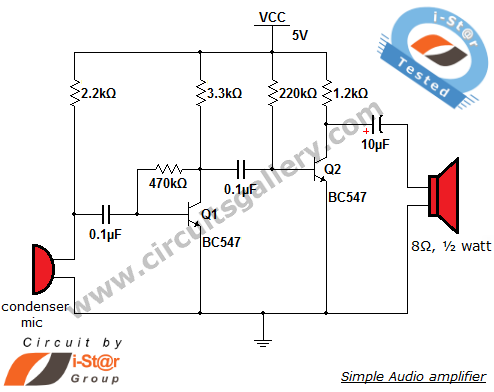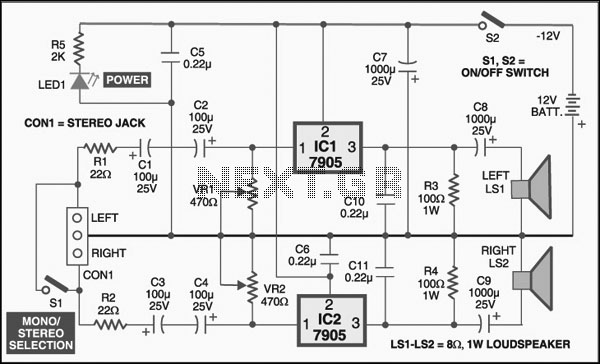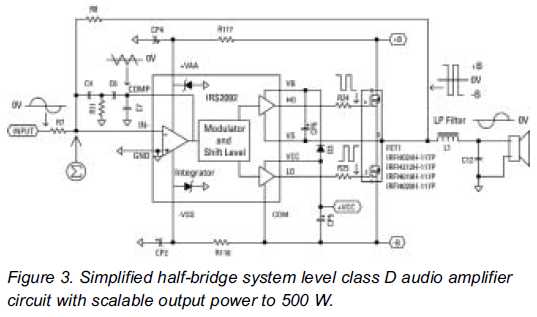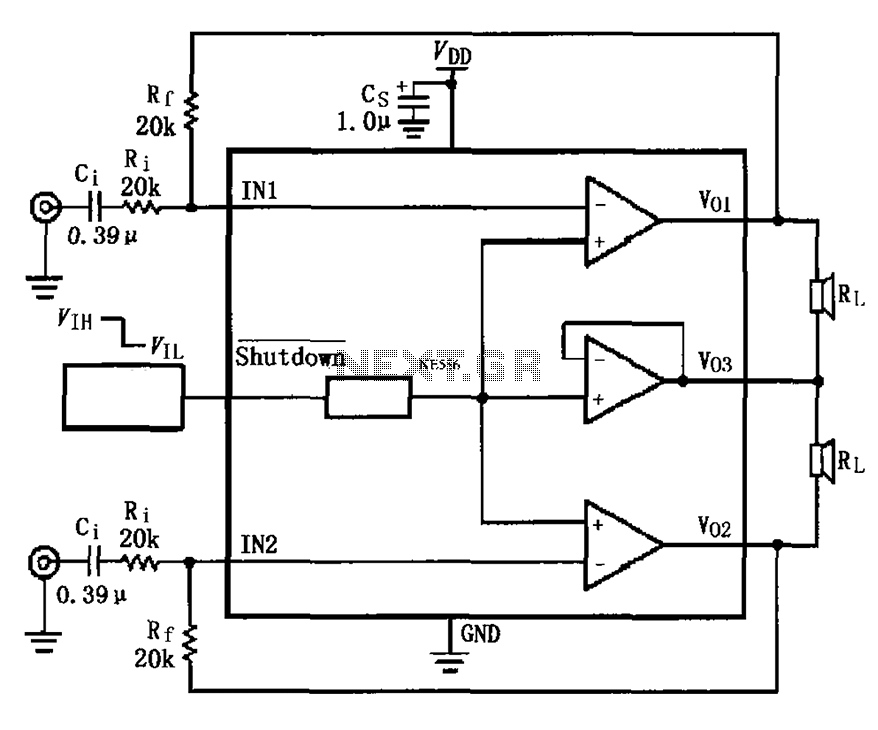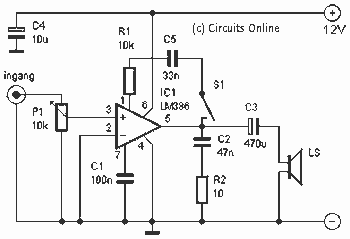
Electrometer amplifier with overload protection
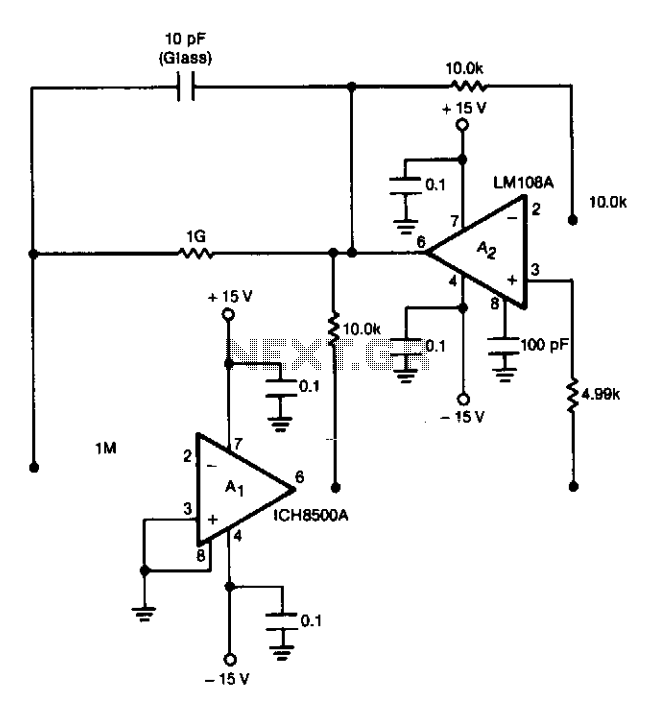
The preamplifier is safeguarded against excessive input signals of either polarity by utilizing the 2N5909 junction field-effect transistor. A nulling circuit allows for the adjustment of the preamplifier output voltage to zero at a fixed low level (up to + 10^-8 A) of the input current. This level is referred to as the standing current and corresponds to the zero-signal level of the instrumentation. The opposing (offset) current is produced in the 109 feedback resistor to counteract the standing current. Different current ranges are achieved by routing the preamplifier output to low and high gain amplifier chains. To minimize noise, each chain incorporates a 1.5 Hz corner active filter.
The preamplifier circuit is designed to ensure stability and accuracy in signal processing, particularly in applications where precision is paramount. The 2N5909 junction field-effect transistor serves as a protective element, preventing damage from high input signals while maintaining the integrity of the signal being amplified. The nulling circuit is critical for establishing a baseline output voltage, allowing for effective signal processing at low input current levels.
The standing current, which is a key parameter in the operation of the preamplifier, is set to a level that corresponds to the zero-signal condition, ensuring that any deviations from this state can be accurately measured and processed. The feedback resistor, valued at 109 ohms, is integral to creating the opposing current necessary to balance the standing current, thus enabling the preamplifier to operate effectively without distortion.
To accommodate varying signal levels, the preamplifier's output is directed to both low and high gain amplifier chains. This design allows for flexibility in signal amplification, catering to different application needs. The inclusion of a 1.5 Hz corner active filter in each amplifier chain is a strategic choice aimed at noise reduction. By filtering out unwanted high-frequency noise, the circuit enhances the signal-to-noise ratio, leading to clearer and more reliable output signals.
Overall, this preamplifier circuit is a robust solution for applications requiring precise signal amplification and noise management, making it suitable for a wide range of instrumentation tasks.The preamplifier is protected from excessive input signals of either polarity by the 2N5909 junction field-effect transistor. A nulling circuit makes it possible to set the preamplifier output voltage to zero at a fixed low level (up to + 10~8A) of the input current.
(This level is called the standing current and corresponds to the zero-signal level of the instrumentation.) The opposing (offset) current is generated in the 109 feedback resistor to buck the standing current. Different current ranges are reached by feeding the preamplifier output to low and high gain amplifier chains. To reduce noise, each chain includes a 1.5 Hz corner active filter. 🔗 External reference
The preamplifier circuit is designed to ensure stability and accuracy in signal processing, particularly in applications where precision is paramount. The 2N5909 junction field-effect transistor serves as a protective element, preventing damage from high input signals while maintaining the integrity of the signal being amplified. The nulling circuit is critical for establishing a baseline output voltage, allowing for effective signal processing at low input current levels.
The standing current, which is a key parameter in the operation of the preamplifier, is set to a level that corresponds to the zero-signal condition, ensuring that any deviations from this state can be accurately measured and processed. The feedback resistor, valued at 109 ohms, is integral to creating the opposing current necessary to balance the standing current, thus enabling the preamplifier to operate effectively without distortion.
To accommodate varying signal levels, the preamplifier's output is directed to both low and high gain amplifier chains. This design allows for flexibility in signal amplification, catering to different application needs. The inclusion of a 1.5 Hz corner active filter in each amplifier chain is a strategic choice aimed at noise reduction. By filtering out unwanted high-frequency noise, the circuit enhances the signal-to-noise ratio, leading to clearer and more reliable output signals.
Overall, this preamplifier circuit is a robust solution for applications requiring precise signal amplification and noise management, making it suitable for a wide range of instrumentation tasks.The preamplifier is protected from excessive input signals of either polarity by the 2N5909 junction field-effect transistor. A nulling circuit makes it possible to set the preamplifier output voltage to zero at a fixed low level (up to + 10~8A) of the input current.
(This level is called the standing current and corresponds to the zero-signal level of the instrumentation.) The opposing (offset) current is generated in the 109 feedback resistor to buck the standing current. Different current ranges are reached by feeding the preamplifier output to low and high gain amplifier chains. To reduce noise, each chain includes a 1.5 Hz corner active filter. 🔗 External reference

